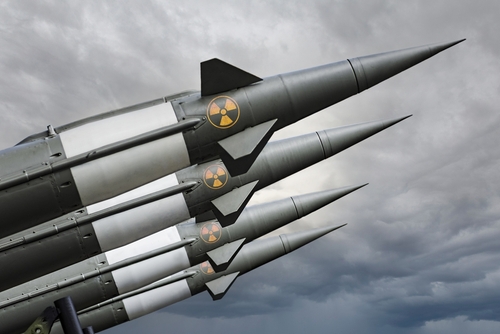Key conservatives are raising alarms over America’s aging nuclear arsenal, warning it is no match for China’s rapidly growing stockpile. While Beijing has tripled its nuclear warheads in just five years and aims for 1,000 by 2030, the U.S. continues relying on outdated systems—some designed for retirement in the 1980s. With tactical nukes removed from Korea in 1991 and an 85% reduction in stockpiles since the Cold War, military experts warn the U.S. is dangerously unprepared for a nuclear showdown in the Indo-Pacific.
America’s Aging Nuclear Arsenal
A growing chorus of conservative voices is warning the incoming Trump administration about a critical national security gap: the United States lacks sufficient tactical nuclear weapons to counter China’s expanding military presence in the Indo-Pacific region. As China rapidly builds its nuclear capabilities, the U.S. continues to rely on an arsenal largely unchanged since the Cold War era. According to a recent Heritage Foundation analysis, America’s nuclear deterrence capability has become dangerously outdated while China has been methodically modernizing and expanding its own nuclear forces.
Why does the US think "China is the Problem?"
Well, it's because it's impossible to Bully a Nuclear Power with the worlds biggest Navy and a vast Army
Who's also the World's biggest manufacturing Economy, now allied to energy powerhouse Russia
That's Uncle Sams real Problem. pic.twitter.com/mYnICuxvk1
— Chay Bowes (@BowesChay) October 5, 2024
The United States has reduced its nuclear arsenal by approximately 85% since the end of the Cold War. This reduction included the complete removal of tactical nuclear weapons from South Korea in 1991, a move that now appears increasingly problematic as tensions in the region escalate. Military planners are now wrestling with concerning scenarios, including the possibility of China using tactical nuclear weapons against strategic American assets such as the Air Force base in Guam.
China’s Nuclear Buildup
While the United States has been reducing its nuclear capabilities, China has been doing the opposite. Intelligence reports indicate China has tripled its nuclear arsenal over just the past five years. Even more concerning, Beijing is projected to expand its nuclear stockpile to approximately 1,000 warheads by 2030. This rapid expansion represents a fundamental shift in China’s military doctrine and poses significant challenges to American security interests in the Indo-Pacific region.
Trump on the Rising Threat of China and our Military being Vulnerable
• Morale is low and Not Many People are enlisting
• SIX Military Ships have been Dry-docked because the Navy can’t find enough personal to manage them (Wow!)
• Our leaders, these fools announce to the… pic.twitter.com/ub14MLRmxq
— MJTruthUltra (@MJTruthUltra) September 2, 2024
China’s nuclear modernization goes beyond simply increasing numbers. Beijing is advancing both its strategic and tactical nuclear capabilities, including the development of anti-ship nuclear weapons designed to target American naval assets. The Chinese military is also investing in space-based platforms that could dramatically reshape the nuclear balance of power. These developments have caught the attention of U.S. military planners, who now face the challenge of adapting American defense posture to address these emerging threats.
Divided American Focus
Security experts point to America’s prolonged focus on the Middle East as a key factor in its failure to adequately address emerging threats in the Indo-Pacific region. For decades, U.S. military planning, equipment procurement, and strategic thinking have been dominated by counterterrorism and counterinsurgency operations in the Middle East, leaving America unprepared for great power competition with China.
💥Obama, 💥Biden-Harris,
what have you done to 🇺🇸America ?💥Trump's new Secretary of Defense admits
"in every war game conducted by the Pentagon,
the United States loses to 🇨🇳China.“💥"China's hypersonic missiles can destroy
all the US aircraft carriers in 20 minutes."… pic.twitter.com/JZKsgcZJ32— 🔆Nick 777🔆 IFB (@realNick_777) November 15, 2024
Senator Deb Fischer, a Republican from Nebraska, highlighted this strategic misstep: “We had Russia, we thought, under control with the breakup of the Soviet Union. We always thought China would be an economic threat.” This assessment reflects how American policymakers fundamentally misjudged the nature of the Chinese threat, failing to anticipate Beijing’s military ambitions while focusing primarily on economic competition.

